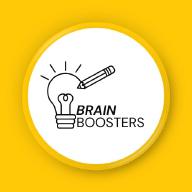What’s covered (at a glance)#
At Key Stage 4 (Years 10–11), maintained schools must offer access to courses in the arts (including Art & Design) that lead to an approved qualification. Programmes typically build on KS3 aims—producing creative work, becoming proficient with techniques, evaluating work using art vocabulary, and knowing about artists, craft makers and designers—and extend them into sustained projects and a coherent personal portfolio. (GOV.UK)
Typical study strands include:
- Developing ideas from personal themes and contextual research.
- Exploring media and processes: drawing, painting, printmaking, sculpture, textiles, photography and digital.
- Recording and annotating: observational studies, photography, notes and reflections that track decisions.
- Presenting a personal, resolved outcome that communicates intent.
Source context: KS4 entitlement to the arts and the subject aims for Art & Design in the national curriculum framework. (GOV.UK)
Common sticky spots#
- Sustained portfolio work: turning early experiments into a clear, personal direction.
- Contextual links: moving beyond biography to analyse how specific artists’ materials, techniques and ideas inform their own work.
- Experimentation → refinement: purposeful testing, then improving craft and composition.
- Annotation quality: concise, reflective writing that explains intent, decisions and next steps.
- Time management: balancing sketchbook development with making final outcomes.
- Presenting a coherent final piece that aligns with the journey shown in the portfolio.
How I support your child#
- Diagnostic → tailored plan: I identify strengths/gaps, then map a realistic timeline and checkpoints.
- Technique workshops: focused sessions in drawing, painting, printmaking, 3D, textiles or digital—matched to project needs.
- Sketchbook routines that work: mini-briefs for studies, purposeful annotation prompts, and quick composition thumbnails.
- Context first: short, engaging look-ins to artists/designers/architects to spark ideas and deepen analysis.
- Iterative feedback: kind, specific critiques with actionable targets; small wins every lesson to build momentum.
- Parent updates: brief notes and optional home tasks to keep the portfolio moving between sessions.
